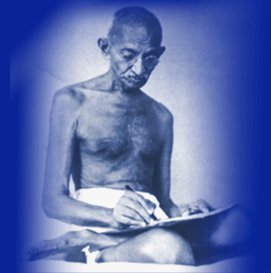India.

This is coolbert:
When most people of the western world think of India, they have a perception of a country that is a non-aligned, non-violent, peace-loving people.
In the tradition of Mahatma Gandhi and his belief of non-violent, peaceful protest.
Indians are looked upon as a passive people not having a violent or warlike nature about them.
And the image of Gandhi, peaceful protest and non-violence is justified. Gandhi did espouse such a philosophy and did practice it. And this IS the image that has been portrayed all over the world.
However, this approach of Gandhi was a twentieth century phenomenon.
In the millenniums of history in India, peaceful behavior, and non-violent protest were not the norm, it was the extreme exception to the norm.
The long history of the Indian sub-continent is full of war, conquest, and further war and further conquest.
I have touched very briefly in prior blog entries upon the invasion of the Indian sub-continent by the Aryan invaders. This occurring around 1500 B.C. as can best be determined. These invaders became the ancestors of the present day warrior caste, the kshatriya.
Ashoka, a conquering indigenous king of India, waged successful war throughout the sub-continent, bringing many kingdoms under his control [500 B.C.] Ashoka was also a Buddhist, and was profoundly disturbed after the fact as to the damage and death his various military campaigns had caused. He became repentant and sent Buddhist missionaries to all corners of the earth, even as far as Alexandria, Egypt.
Several centuries after Ashoka, came the approach of the Macedonian army under Alexander the Great [Secander to the Indians] [330 B.C.]. Alexander's army advanced into the sub-continent as far as present-day Pakistan, before turning back. Alexander's goal was to invade, conquer and subdue India, but this was not possible.
Many peaceful centuries did pass until the first Islamic invasions of India, around 700 A.D. The goal for the Muslims was the same as was that of Alexander's, invasion, conquest, and subjugation. And they were not successful until around the time of Mahmud of Ghazni [1000 A.D.] A series of attacks from Muslim forces continued for about five centuries, until total subjugation of the sub-continent by Muslim armies was complete [1500 A.D.] These Islamic rulers became known as the Mughals.
Sometime in the late 1700's began the invasion of the British, the goal being the same as all other conquerors. Invasion, conquest, subjugation. And for the most part the British fought against the armies of the local Mughal rajahs and shahs. The British were eventually successful, but their rule was always at risk from revolt [I would imagine that has been the same situation for all invading rulers of India]. The famous Sepoy Mutiny is a thing of legend, the British with great difficulty suppressing the "native" revolt.
Of course, in 1945 and for several years thereafter, came the last war fought with primitive weapons. The partition of British India into Pakistan and India. As many as two million people died during the fighting between the warring factions of the Hindus, Sikhs, and the Muslims. This fighting continues to this day, albeit on a much smaller scale [but always contains the possibility of wide-spread fighting at any time].
And since the partition of the Indian sub-continent, the forces of Pakistan and Indian have fought, what is it, three or four major wars. And threatened just recently even nuclear exchange with short range nuclear tipped missiles.
Within India there does exist a group [very large] of Hindus that can only be described as militants. This is the RSS. People who are prepared to fight, "only in self-defense", as they would say. When you read of fighting between factions of Muslims and Hindus in India, it is quite often the RSS that leading the fighting on the Hindu side. This organization does contain a hard-core of militants who are willing to use violence on a massive scale to achieve their aims. Among the trademarks of the RSS is physical culture of which stick fighting is an important part. Read further about the RSS by clicking here.
The modern Indian army is almost one million man strong [!!] and very well equipped with indigenous weaponry that is sophisticated and designed for the terrain the army of India will and does fight in. An outward looking military that has designs perhaps to be come the dominant power of the Indian Ocean region [maybe it already is [??]] and again, perhaps, even beyond that!!
It seems that even a land and people with such a strong religious tradition and a belief system that reveres animals to include even insects, war and war making is the rule, not the exception, much as it is throughout the rest of the world.
coolbert.
Labels: India

0 Comments:
Post a Comment
Subscribe to Post Comments [Atom]
<< Home